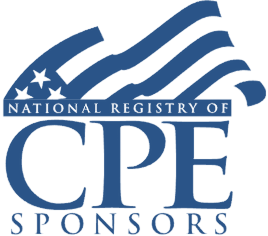Welcome! Save 30% on all CLE, CPE, and Professional Skills webinars, plus 15% off any annual pass with code HOLIDAY25
About the Course
Introduction
This course will explain the nuances of branch profits tax, including what entities are subject to this additional tax, how U.S. effectively connected income, dividend equivalent amounts, and the change in U.S. net equity is determined, and the effect of U.S. income tax treaties on the branch profits tax rate.
Description
The branch profits tax is a second level of tax assessed on foreign corporations with U.S. branches that do not reinvest its earnings back into a U.S. trade or business. This tax is in addition to the Section 882 corporation income tax. Since earnings between U.S. parent corporations and subsidiaries are effectively taxed twice, once at the corporate level and again when dividends are distributed, this 30 percent tax is meant to equalize the tax burden of U.S. and foreign corporations. The U.S. currently has over 60 income tax treaties with other countries, many of which offer a lower branch profit tax rate.
The rules for the calculation of branch profits tax are complex. The 30 percent tax is charged on the corporation's dividend equivalent amount for the tax year. The dividend equivalent amount is its effectively connected earnings and profits, adjusted based on the change in U.S. net equity. Form 1120-F Section II is used to calculate income effectively connected with the conduct of a trade or business in the U.S. Section III begins with ECI, adds or subtracts applicable adjustments, determines the change in U.S. equity, and finally calculates the tax itself. Tax practitioners working with foreign corporations and branches need to understand the components and considerations of the branch profits to properly tax and utilize treaty benefits for these entities.
Listen as our panel of foreign income tax experts explains the calculation and reporting of the branch profits tax for international tax advisers and foreign businesses.
Presented By

Mr. Kennedy has more than 42 years of experience dealing with a variety of international tax matters, specializing in tax consulting services to a wide variety of clients ranging from closely held companies to multi-national businesses. His expertise includes domestic and foreign income and social security tax planning, tax compliance for individuals and corporations, tax treatment of incentive compensation plans, international assignment program administration, and international assignment policy design. Mr. Kennedy has also served as the U.S. practice leader for international social security matters for a Big 4 accounting firm. He is a frequent speaker in the areas of international tax compliance and reporting obligations U.S. information reporting requirements for foreign assets and foreign entities, U.S. tax implications of foreign pension and social security plans, and U.S. income and social tax treaty planning. Mr. Kennedy is a member of the Texas Bar and is licensed as a certified accountant in Georgia and Texas. He has a B.A. from Furman University and a J.D. from Vanderbilt University School of Law.

Mr. McCormick specializes in the areas of international taxation and multinational trusts and estates. He has published assorted national articles and given innumerous national and local presentations on assorted areas of international tax. He is licensed to practice in the State of New Jersey and the Commonwealth of Pennsylvania.
-
BARBRI is a NASBA CPE sponsor and this 110-minute webinar is accredited for 2.0 CPE credits.
-
BARBRI is an IRS-approved continuing education provider offering certified courses for Enrolled Agents (EA) and Tax Return Preparers (RTRP).
Date + Time
- event
Tuesday, August 30, 2022
- schedule
1:00 p.m. ET./10:00 a.m. PT
- Branch profits tax: introduction
- Foreign corporations
- U.S. trade or business
- Effectively connected income
- Income tax treaties
- Calculating the tax
- Reporting the tax
- Special rules and exceptions
- Best practices
The panel will cover these and other key issues:
- Determining when a U.S. branch is subject to the additional branch profits tax
- Identifying branch profits provisions in specific treaties
- Reporting the tax on Form 1120-F, Schedules II and III
- Determining the change in U.S. net equity
- When is a branch considered engaged in a U.S. trade or business?
Learning Objectives
After completing this course, you will be able to:
- Determine what constitutes a U.S. trade or business for purposes of the branch profits tax
- Decide how to calculate the change in U.S. net equity
- Identify specific activities that generate effectively connected income in the U.S.
- Ascertain which U.S. income tax treaties include provisions for lower branch profits rates
- Field of Study: Taxes
- Level of Knowledge: Intermediate
- Advance Preparation: None
- Teaching Method: Seminar/Lecture
- Delivery Method: Group-Internet (via computer)
- Attendance Monitoring Method: Attendance is monitored electronically via a participant's PIN and through a series of attendance verification prompts displayed throughout the program
- Prerequisite: Three years+ business or public firm experience preparing complex tax forms and schedules, supervising other preparers or accountants. Specific knowledge and understanding of international taxation including residency determination, foreign entity classifications, application of treaty benefits, as well as GILTI, Subpart F, and the related Section 250 deductions.

BARBRI, Inc. is registered with the National Association of State Boards of Accountancy (NASBA) as a sponsor of continuing professional education on the National Registry of CPE Sponsors. State boards of Accountancy have final authority on the acceptance of individual courses for CPE Credits. Complaints regarding registered sponsons may be submitted to NASBA through its website: www.nasbaregistry.org.

BARBRI is an IRS-approved continuing education provider offering certified courses for Enrolled Agents (EA) and Tax Return Preparers (RTRP).

BARBRI CE webinars-powered by Barbri-are backed by our 100% unconditional money-back guarantee: If you are not satisfied with any of our products, simply let us know and get a full refund. Contact us at 1-800-926-7926 .
Unlimited access to premium CLE courses:
- Annual access
- Available live and on-demand
- Best for attorneys and legal professionals
Unlimited access to premium CPE courses.:
- Annual access
- Available live and on-demand
- Best for CPAs and tax professionals
Unlimited access to premium CLE, CPE, Professional Skills and Practice-Ready courses.:
- Annual access
- Available live and on-demand
- Best for legal, accounting, and tax professionals
Unlimited access to Professional Skills and Practice-Ready courses:
- Annual access
- Available on-demand
- Best for new attorneys
Related Courses

State Tax Strategies for Athletes and Entertainers: Residency and SALT Deduction Limitations
Tuesday, January 6, 2026
1:00 p.m. ET./10:00 a.m. PT



